How long have you had “learn Spanish” on your bucket list? Chances are for far too long.
I had the desire to learn Spanish for quite awhile but it wasn’t until I got bored with my job and traveled to Argentina for 6 weeks that I finally regrouped and decided it was time to take learning Spanish more serious.
After coming up empty in Argentina, I figured it was time to change up my methods from the traditional class model.
To be honest, there is a lot of misinformation out there talking about the best ways to learn Spanish. I am here to set the record straight.

In the one year that I focused on learning Spanish I achieved more than I ever could have imagined by following a few simple principles.
Below I am going to outline the 7 best ways to learn Spanish on your own without classes and courses.
As you will notice, all of these methods can be done from the comfort of your own home.
I truly believe that anyone can learn to become fluent in Spanish in Austin, Texas just as quickly as someone living in Buenos Aires, Argentina. Matter of fact, I personally know that to be the case!
Don't have time to read the entire article? Download the 11 Best Ways cheat sheet [4 more not included].
However, there is one thing you must remember before starting!
Be Consistent
This tip isn’t really a way to learn Spanish, but I wanted to include it before you get started.

You must, and I mean must, begin to form a habit of learning the language each day if you are going to stick with it over time.
I have seen too many friends quit learning Spanish simply because they tried to squeeze it into their week and got “busy.”
Habits can be built in a little less than a month so the important thing is you are creating the habit of learning each day.
If you don’t start forming a studying habit you will not be able to make sustainable progress. It’s not like binge watching Netflix, you can’t just study hard on Saturday to make up for a week without speaking a lick in Spanish.
In the famous business book, Good to Great, Jim Collins explains the 20-mile march. Essentially those who go slow and steady and make consistent progress each week are bound to stick it out to the end while those that try and do it all at once fall short.
Here's a great short video explaining the 20-Mile March in case you are interested. I try and live by this and seek to make consistent progress each day in everything that is most important to me.
Don’t set the goal of spending 3 hours a day studying unless learning Spanish is your full time occupation.
The 7 Best Ways to Learn Spanish

1) Find an Online Tutor to Speak With Each Week
Important Disclaimer: We're proud affiliates for some of these tools, meaning if you click a link for an app and make a purchase, we earn a commission at no extra cost to you. We’ve used all these apps and tools and will only recommend the ones we truly value. Please don't spend money on them unless you think they will be valuable to you!
If you are to do just one thing in your quest to Spanish fluency, my recommendation would be to focus on this method. Fact of the matter is, having an online tutor will quadruple your results compared to time spent in an actual classroom.
Why, you might ask? A classroom environment is focused on teaching several students (all learning at different paces) all at once.

At most, you might have a couple speaking interactions in one class sitting.
However, an online tutoring session is 100% focused on you the student. You are the reason for the class and since you are the focus you will do the speaking and hearing.
Having a good Spanish tutor is without a doubt the main reason I was able to get to Spanish fluency in less than a years’ time.
Where can you find an online Spanish tutor?
Below are two amazing tried and tested options...
Option 1 (Simple): Spanish55
When picking a Spanish tutor, there’s a few things you should look for in terms of personality and qualifications.
If you are eager to get started and don’t want to go through the process of interviewing multiple tutors, we recommend you check out Spanish55. They’ve carefully selected a team of language tutors qualified to take you step by step in your journey towards fluency.
Their onboarding process starts with a 55-minute consultation over Skype, where they will learn about you and your goals with the Spanish language. They will then assign a tutor that is right for you depending on your needs and goals. This initial stage is completely free of charge.
Spanish55.com caters to adults who want a structured learning approach, flexible schedules and commitment.
From what I’ve seen, their customer service is attentive and students rate them highly.
Option 2 (Affordable): LanguaTalk
There are many platforms out there for learning Spanish, and LanguaTalk is one of the best.
Here’s why:
The tutors: It’s easy to find a talented Spanish tutor. The founders put time into assessing tutors and are selective in who they accept. You can watch tutors’ videos and check their reviews. There are tutors from both Spain & Latin America, so you can learn whatever dialect of Spanish you prefer.
Value for money: The tutors offer decent rates as they teach from home and so don’t need to consider travel costs. If you’re on a budget, you can filter by price and find tutors from just $11/hour.
It’s low risk: You can book a free 30-minute taster session to chat with a tutor before deciding, and then pay one lesson at a time if preferred. I look for tutors who speak Spanish with me (not English) and correct my mistakes as I go.
It’s flexible: The site is easy to use, and allows you to see tutor’s availability in your time zone, so you can learn whenever it suits you. You can take the lessons on your preferred calling software (Zoom, Skype, etc.).
Pro Tip: Schedule lessons at the beginning of the week so that you have them on your calendar before your week gets jam packed with activities and events.
2) Use Language Exchanges to Speak to Native Speakers
Language exchanges are yet another excellent and free way to learn Spanish.
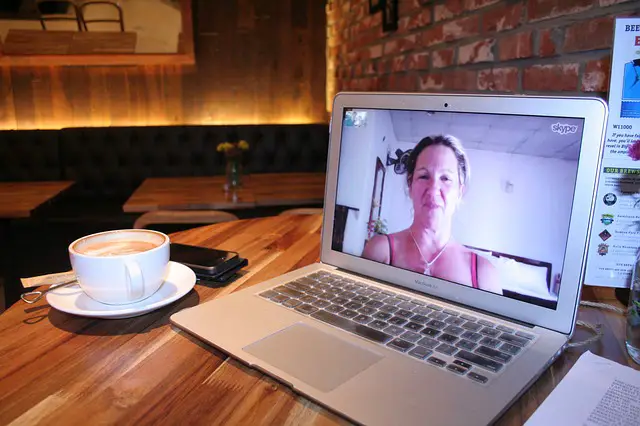
Unlike anytime in history, you can speak with someone from Spain from anywhere in the world as long as you have an internet connection.
I have met some amazing friends from all over the world.
All you need to do is ask a native Spanish speaker, “let’s spend the first 30 minutes speaking in English and the next 30 minutes speaking in Spanish.”
The amount of time can vary, but the important part is you are meeting some new friends.
I also found that a lot of my Latin friends were content just speaking Spanish the whole time and only wanted a friend to converse with. So basically, I had an informal Spanish lesson with a native speaker without spending a dime.
Where can you find these Spanish language partners?
One site that is strictly focused on language exchanges is Conversation Exchange.

This site is great as it allows you to meet other language partners in your area. A lot of times you can find a language partner that lives in your own city with the simple search tool on the site.
I actually met a good friend from Spain who lived about an hour away from me.

When I was using the site, it issued the following warning:
“Important: A profile may be rejected if the primary reason for subscribing is not language exchange. You may not enter any personal or sensitive personal information.”
I can honestly say my primary reason to use this site was to meet people for a language exchange.
I never would have thought that I would have met my future wife, Andrea, on it!
It’s amazing to think that if we had grown up 10 years earlier we probably never would have met.
Pro Tip: Filter by the dialect of the speaker that you are looking to learn from. If you are learning the Spain dialect then make sure to filter by people from Spain.
3) Use a Flashcard App with Spaced Repetition Technology

Flashcards are the perfect way to learn vocabulary. There are several very good flashcard apps that you can use right from your cell phone.
It’s crucial that you don’t just study with any old flashcards. You should make sure to use a flashcard app that incorporates space repetition software.

Notice how you can select if you want to see the card in 4 days.
I use the Anki app on my phone and absolutely love it. Anki is great as they allow you to choose the flashcards you do and don't understand.
For the words that you do have a good handle on, the app stores the flashcard away for a month or two later.
Basically, you select the words that you have a grasp for and the app presents them to you less frequently.
Then, just in the nick of time, it shows back up as a flashcard to make sure you don’t forget it.
The best part is Anki has public flashcards that you can download direct to your phone and start using right away.

If you are lazy like me and don’t want to create all the flashcards, just download a highly rated public one and start using it.
It is important to pick flash cards that integrate sentences, audio, or pictures into the flashcards. Our brains tend to remember stories and imagery a lot better than just individual words.
This is probably one reason why you couldn’t remember anything from your high school biology class.
Here’s another quick recommendation.
If you are first starting out, get started learning only the most common words. No point learning obscure Spanish words that you will rarely use. Just get started with the ones that are used 80-85% of the time in regular conversation.
Pro Tip: Delete 1 Social media app from the front screen of your phone and place your flashcard app front and center. Whenever you are bored, open up the flashcard app (instead of the social media app) and use it for 5-10 minutes.
4) Listen to Spanish Podcasts
Podcasts are great because you can listen to them whenever you are doing unengaging activities like walking the dog or folding the laundry.
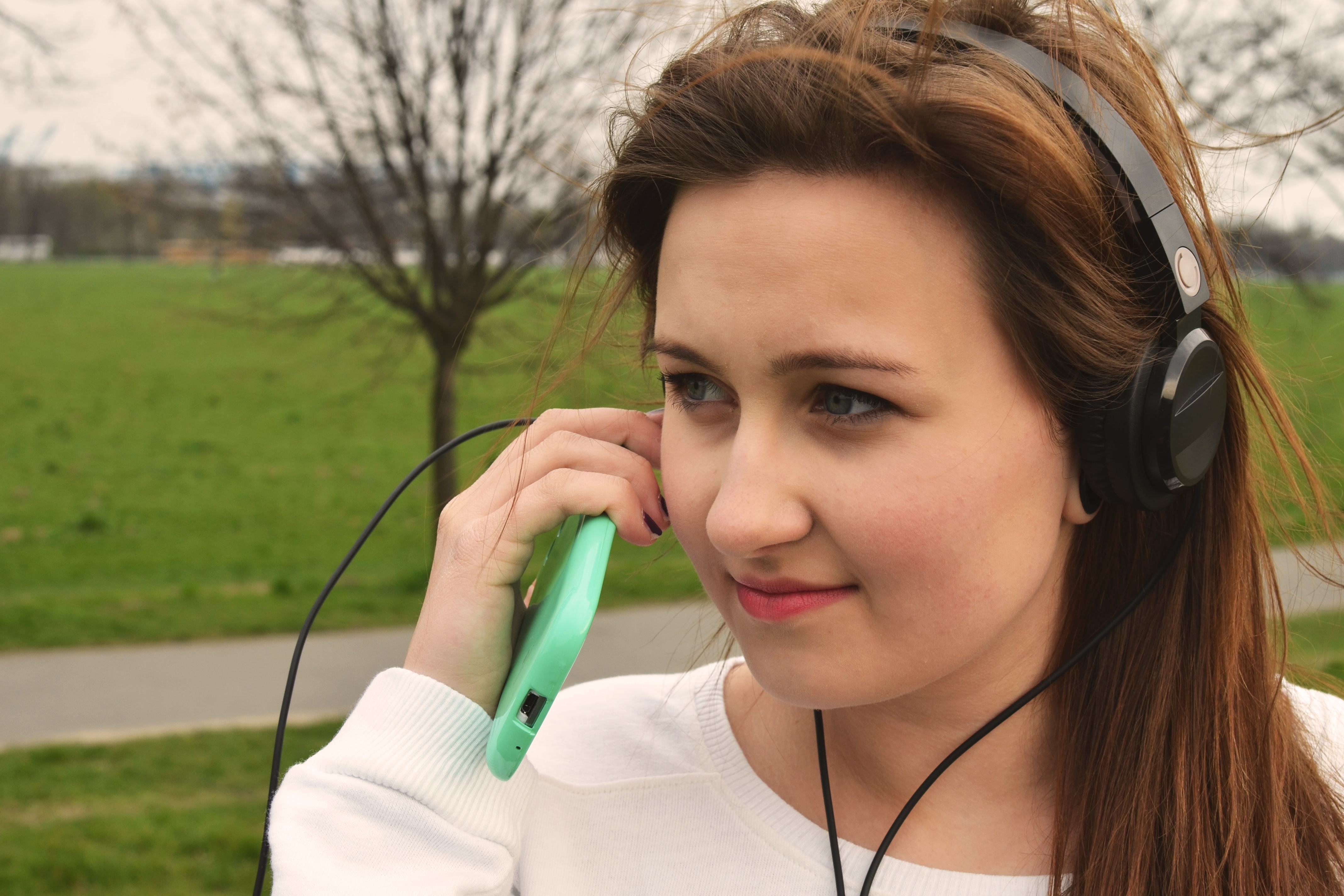
Basically, anything that doesn’t require your brains attention makes for the perfect time to listen to a Podcast episode.
You can easily download or stream free episodes from the Podcast app on iOS or on Spotify.
There are some great Spanish Podcasts out there for those that like hearing the Spanish language in spoken format.
Below are my three favorites.
Coffee Break Spanish - (For Beginners and Intermediates)

Far and away the best Spanish Podcast out there (IMO). I used this Podcast early on and loved it.
They have fun and engaging episodes that teach you the essentials of the language.
They even created an interesting storyline in which they break down the intricacies of the language through story.
Españolistos - (For Intermediates and Advanced - Latin American Dialect)
Naturally, I couldn’t recommend a Spanish Podcast without recommending our own, could I?

My wife (Colombian) Andrea, and I (gringo), made this Podcast for Latin American Spanish Learners who wanted to hear conversations on various topics.
There are a wide variety of episodes ranging from Latin American travel and cultural differences to famous biographies and even some grammar translation exercises. All the Podcasts feature a free downloadable transcript to reinforce your vocabulary and increase your listening comprehension.
The best part is the Podcast is spoken in Spanish 99% of the time as it is focused on Intermediates and Advanced Spanish learners.
Notes in Spanish - (For Intermediates and Advanced - Spain Dialect)

Ben and Marina do an excellent job hosting this conversational Podcast.
The Podcast features short 15-30 minute conversations between the two. They have over 100 episodes to get you going.
They speak with a dialect from Spain so it is especially good for those learning Spanish from Spain.
Pro Tip: When listening to a Spanish Podcast, follow along with the transcript so that you can be reading and hearing at the same time!
5) Read Books in Spanish
This one can be a difficult. It was so difficult that I often neglected it early on in my studying.

If you like reading, why not trying reading a book in Spanish?
I did this with the Narnia series and although I didn’t understand every word, I understood most of it and still found it just about as enjoyable as I would have in English.
Rather than review every single word I didn’t understand, (that would take forever), I looked up the common words that kept coming up. Who would have thought that “enano” meant dwarf in Spanish?
If you are finding this method to be too intimidating, just pick out your favorite book in the Spanish translation. Just about every popular book these days is translated into Spanish.
I picked out one of my favorite books in the Spanish translation. Since I had already read this book a couple times in English I already knew the storyline and what was going on in each chapter.

This allowed me to understand the words as I had an idea of the plotline. I experienced the book in a whole new way.
I think this is the perfect way to get started with a Spanish book.
In case this still frightens you, I would say you should attack it like the 20-mile march mentioned above.
Spend 5-10 minutes each morning reading a few small passages. It’s ok if you read slower. The important part is you are making progress through reading.
Pro Tip: If you read on a Kindle device, you can highlight the words in Spanish and get the definition for the words that you don’t understand. Granted, the definition is in Spanish so hopefully you will be able to understand the definition.
6) Begin Writing in Spanish
If you haven’t noticed by now, our Spanishland School motto is, “Piensa como nativo.”

We truly believe that in order to achieve Spanish fluency you need to start thinking and acting like a native speaker.
How can you do that?
By immersing yourself in the language, you will slowly start to think like a native. One way to start thinking in Spanish is to start writing in the language.
Do you write in a daily journal?
If you already do, why not try to write at least half of it in Spanish. This is a great way to stretch your mind and push yourself to use and think up new words.

Early on, I set a goal to scribble down half a page of my thoughts each morning in Spanish. I did this at the same hour every day during my regular study time.
I forced myself to use new words that I had learned in my flashcard app.
Then, after writing them down, I made sure to use them in my conversations with my Spanish tutor later on in the day.
Thus, I was engaging all aspects of my brain and really learning the vocabulary.
Pro Tip: Stretch your mind and write a short story involving wild and imaginative things. The more outlandish the story, the more likely you are to remember the vocabulary words.
7) Join an Online Spanish Membership or Course to Improve Grammar and Pronunciation
Do you ever struggle with what to study next?

If you are anything like me, you likely struggle with staying focused, being consistent, and most importantly, improving your weak areas.
The best part about joining a good online Spanish course or membership is that the structure is already perfectly laid out for you.
When I got motivated on my Spanish fluency, I watched a bunch of random YouTube videos, bought a few Spanish grammar books, and tried speaking Spanish with whoever would give me the time of day.
Were these things bad?
No, of course not... but the problem was more the fact that I was un organized, going from one topic to the next, and thus I eventually plateaued in my progress.
If I had a Spanish teacher that put together an organized study plan for me to get to the next level, I believe I could have gotten out of the intermediate plateau much sooner.
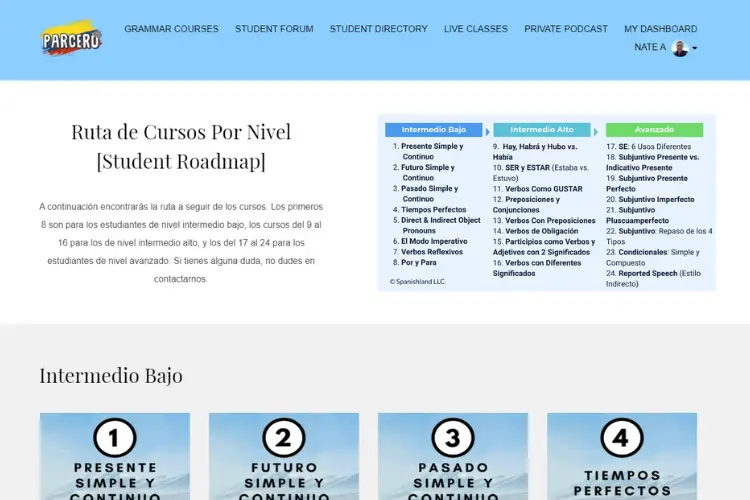
That's one of the main reasons we created the Parcero Membership.
Our membership is specifically focused on Intermediate and Advanced Spanish students that are looking for structure and consistency in their studies.
Each month, we teach on a specific grammatical theme and provide weekly study material with engaging videos, dialogues, and reading material to keep you focused on your Spanish studies.
We even have a special private Podcast and small group speaking opportunities just for our Parcero students.
You can learn all about it and join at the next available enrollment date here.
Pro Tip: Look for a fully structured course or membership that you connect with in a meaningful way. It's so important to enjoy the process.
Study Plan for Your Next 30 Days
I’m going to give you a simple study plan for the next 30 days.

After that, you can change things up and focus on the things that you are enjoying most. This is meant to be an example, not a hard and fast study plan that you must go by.
Here is a sample routine for someone with a busy work schedule.
I believe this can easily be accomplished if you can squeeze out an extra 5 hours a week.
During the Week
Morning Routine
- Before getting ready, spend 15-20 minutes reading in Spanish and journaling half a page worth of thoughts in Spanish.
- Listen to Spanish music in the shower or while you are getting ready.
Commute To and From Work
- Listen to a Spanish Podcast or a Pimsleur Spanish CD. I got my CD’s at a local library.
Lunch Hour
- Take 30 minutes to an hour doing a Spanish lesson with an online tutor 3 times a week.
After Dinner
- Half of the nights after dinner you can watch a Spanish show or American TV with Spanish Subtitles. The Spanish subtitles are crucial.
- For the other half of the nights, make sure to schedule a language exchange with a friend that you can chat with in person or on video.
Weekend
- Try to attend a Spanish meetup if there is one in your area. You can find one on Meetup.com.
- Plan time to speak in Spanish on the weekend with a tutor or a conversation exchange. Maybe you know a native Spanish speaker that lives nearby that doesn't mind helping you? If so, offer to buy them lunch in exchange for help.
- Make sure you schedule next week’s tutoring lessons in advance before you get busy.
As you start getting to a more intermediate level it is important to start putting in time focusing on grammar with a textbook or teacher. It's never too late to work on grammar.
So What’s the Best Way to Learn the Spanish Language?

Ultimately, the best way is the one that you enjoy the most and can make consistent progress in. For me, that was scheduling consistent time to speak with native speakers.
By the way, I don't consider myself an extrovert at all so I am living proof that anyone can do it!
This article set out to provide you with the 7 best ways to learn Spanish. I have tried and tested all of these methods and many more. Without a doubt, these 7 are the most effective.
I've actually got a list of 11 top ways (4 more cool ones) that you can get here.

I didn’t mention using Rosetta Stone or the Duolingo app, not because I don’t find them helpful. They most certainly are.
However, I find them to be too passive in their approach.
If the goal is to get to Spanish fluency, then you need to focus each day towards interacting with the Spanish language and speaking it early on.
There is nothing quite like meeting someone else in a Spanish speaking country and then also speaking their language.
Please do stick it out, I can promise it will be worth the struggle in the end.
What method have you found to be most effective to learn Spanish?
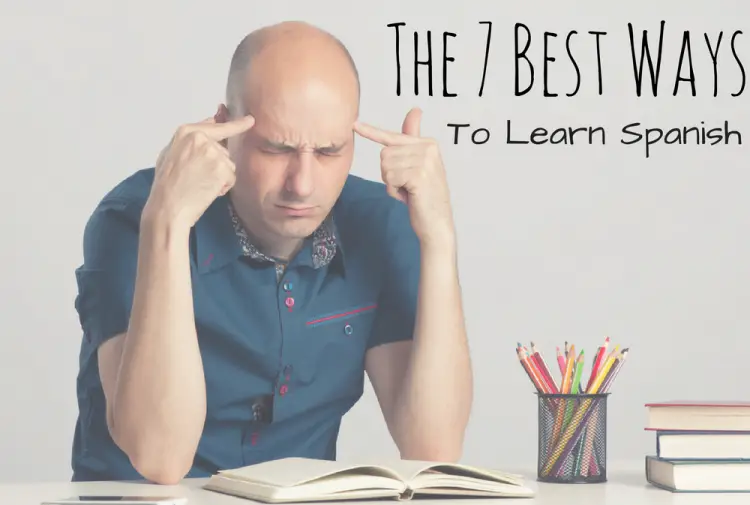
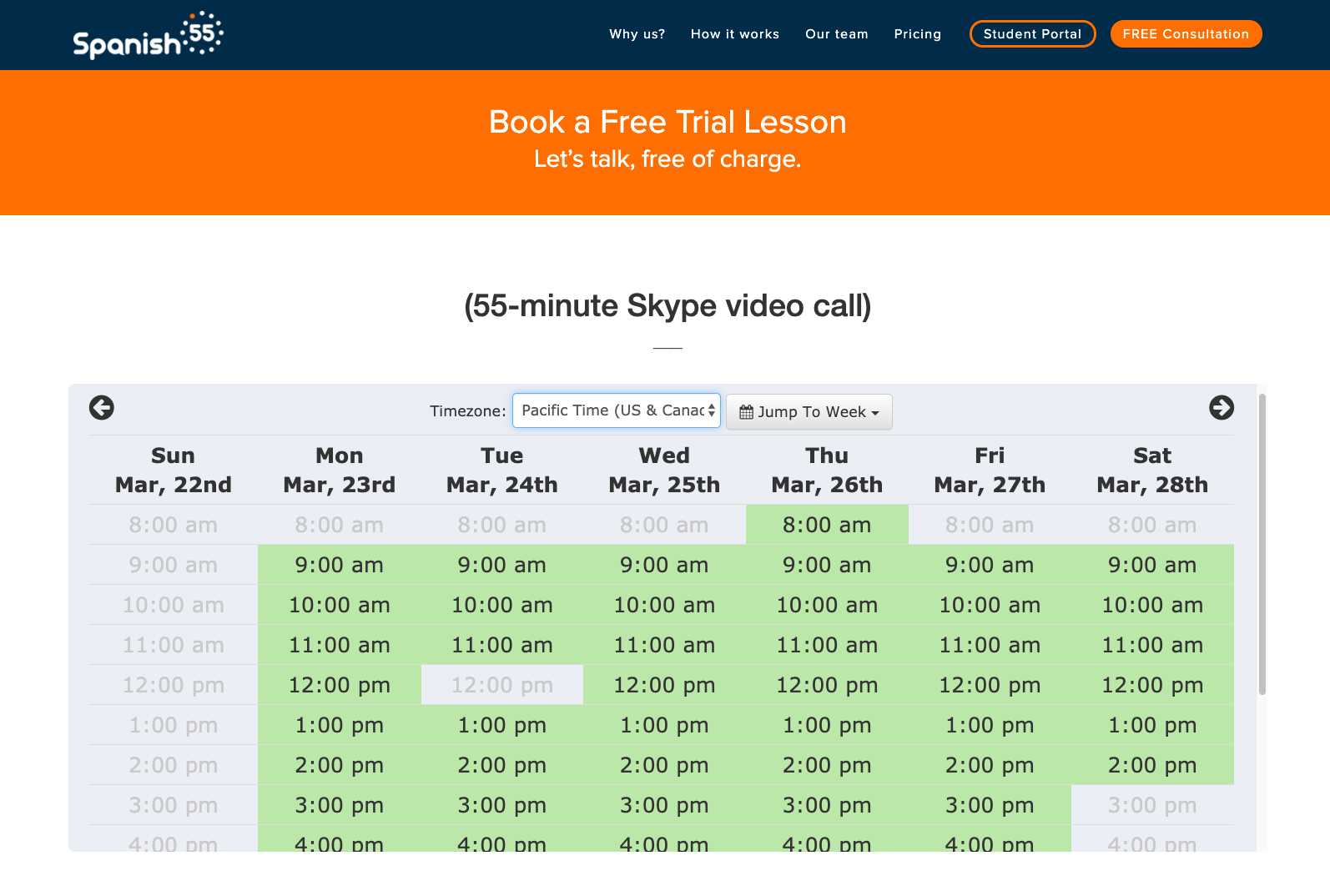


“Who would have thought that “enano” meant dwarf in Spanish?”
Somebody who knew their Greek roots, that’s who. The Spanish word comes from a Greek word “nanos,” dwarf, which also shows up in the combining form “nano-” which is used in metric units to mean a billionth part of something. A nanometer is a billionth of a meter, and so forth.
Hi Steve, very interesting. Your response makes me wonder if you are a scientist or professor as that’s some pretty in-depth knowledge.
In Italian as weel is “nano”, coming from Greek, as mentioned above. So I knew it, too 😀
I have read scores of online articles about how best to learn Spanish, and this was by far the most original & helpful. It truly struck a resonant chord with me. I immediately realized why my group Spanish classes were not very effective in increasing my fluency. Thank you so much for the terrific advice.
Hi Sandy, thanks so much for the kind words and I am glad you enjoyed the article. I hear you on the group classes. You can definitely still learn from them, but from what I have found is you have to go the pace that the teacher is teaching for the whole class and can only move as fast as the slowest student. Thanks again for checking out the article and site. 🙂
I’m also learning Greek (I have been for a very long time with little success so I have slid it to a back burner because I can’t wait to learn Spanish). I’m going to try this with my Greek study when I put it back on the front burner.
For your suggested month schedule, how can I spend 20 minutes reading and writing in the morning when I don’t know enough to read or write yet?
Hi William,
I would challenge you with this: Can you read a Spanish children’s book or understand parts of a Spanish comic book? Could you write a short dialogue of two people speaking together (basic conversation) in Spanish?
I bet you could.
But even if you can’t write a basic conversation in Spanish, maybe just use that time to speak with a native Spanish tutor online. The important thing is not so much the activity, but the fact that you are making consistent forward progress.
Thanks for checking out the blog!
-Nate
Absolutely the best article that I have read on learning a language. I have been using Anki and watching a few shows but the suggestions for the live conversations with native speakers is by far what I had been lacking.
Hi John, thanks so much for the kind words on the article and glad you found it useful! Doing live conversations with native speakers is a real game changer and that’s where I think you will make the most progress. Keep pushing forward!
I lived in Spain in 2003 for 6 mths and became fluent while there – I had no choice as I was completely immersed in the culture, read, wrote and watched everything in Spanish. Being in the states all these years have made me lose the fluency. I have been meaning to get back to learning it on an advanced level and your steps reminded me of what I had to do back then to assimilate into the culture. Thank you so much for this article! I knew I needed to get back to the basics and this is a helpful “how to” guide.
Glad you found this article helpful Meera! I’m sure you will get back to an advanced level soon. 🙂
Thanks Nate, these are some excellent tips! I am doing a few of the things you mention but I know I need to talk to my Spanish friend more often. I will try to keep it simple instead of wanting to speak our usual (complex) English thoughts in Spanish – fortunately my friend is very patient! Perhaps a theme and a number of phrases relating to the theme can be put onto flash cards to make it interesting. I think I’ll try that.
Awesome Jenny. It sounds like you are on the right track. Just have normal conversations like you would in English and it will slowly start to come together.
Thanks Nate. This is really useful advice, especially about finding ways to speak with a native speaker. Over the past two years I’ve been having conversations with a Spanish speaker and my progress has taken a quantum leap.
Awesome David, super good to hear!
Thanks for the article. I’ve been studying Spanish for a month and a half now (almost 2 months). I actually wanted to learn 15 years ago, but back then I allowed other things have more importance than learning. But now, I’ve never been more serious. I’ve been using Duolingo daily, try to make sentences with words that I’ve learned with my friends who are native speakers (with various success). I’m assuming it’s grammar, because I’ve been told that I’m clear and precise in my pronunciation. Since I watch YouTube regularly, I’ve been watching a lot of Spanish learning videos ( which is where I discovered you guys). I’ve learned a lot from watching Andrea, and I’ve only found you guys a week ago.
I’ve made Spanish part of my everyday life now. I changed my phones settings to be in Spanish, I listen to podcasts on my commute, and When I see various stuff written in English, I try to see if I can figure out what that would be in Spanish. And when I see something written in Spanish, I try reading it.
My skill level is between beginner and intermediate, but I’m content because I know one day I’ll be fluent. I’m finding learning fun, and I’m always finding ways in include it in.
Awesome to hear Bob and I appreciate you sharing a bit about your story and how you found us. I have no doubt with those methods and the right consistency you will be upper intermediate in a short amount of time. Keep it up!
Nate,
Thank you for a very well thought out and concise article. I agree with everything you’ve mentioned. The one thing I’ve never tried to use are flashcards. I learn new words regularly and now can try using them with the flashcards. I’m actually the organizer for a Spanish Meetup in my area. Les deseo lo mejor con el negocio.
Awesome Tom! Yes, flashcards are a great way to learn!
Thank You for sending me el Subjuntivo. Looks verf useful.
Thanks Roelof!
Andrea seems like a great woman, you are a lucky man. She’s one of the best teachers I have come across for spanish.
Thanks Gurds. She is and has a bigtime love for helping others. She’s passionate about teaching Spanish and loves to see the improvement of others.
Nate,
Do you have a recommendation as far as a grammar text book goes? At this point I am a complete beginner!
Sarah, unfortunately we do not at the moment. I have used Assimil and it was okay. This is something we are looking to create in the future though. 🙂
I live in Spain now, and before that lived for 13 years in Cuba. You´d expect to be fluent after all this time, but I only had formal lessons for short times. Passed secondary level exam, but then learned by copying people´s speech. I´ve already sorted out a lot of things I was unsure about, by using the Spanishland videos. As a writer, I need accuracy and reliability, so that´s the area that really needs attention. In Cuba, I learned a lot from songs and from reading Spanish subtitles while listening to the actors speaking English (it´s amazing how many mistakes translators make!) My accent is quite complicated as I´ve lived in four countries and have influences from them all. Love improving my Spanish, and am also learning some Dutch and Irish, though am far less proficient in those.
Thanks so much, Elisa!
Thanks a lot for your great help in learning this beautiful language.
🙂
Since we were colonized by the Spaniards, some Filipino words actually came from Spanish words. Dwarf in Tagalog (Filipino language) is “unano”, close to enano in Spanish.
Being a pageant fan and seeing Latinas succeed make me wanna learn the Spanish language so bad, but I can’t afford a teacher so I have to learn by myself. It has been my dream to go to Mexico, or Colombia, and live there for a couple of months/years.
But these tips are so interesting, after reading the podcast thing I immediately downloaded it so I can listen to something while walking to work, or travelling home in the province. Thank you so much for this! Love from the Philippines!!
Thanks for reading, Alexander! Make sure to find yourself a couple language exchange partners. Those are free. 🙂
This was the most helpful how-to-learn-spanish page I’ve ever read! I accidentally clicked Andrea’s YouTube video on indirect pronouns this morning (I meant to click on someone else’s link). I am huge believer of “nothing is by accident” so I watched her video and it was the most helpful video I’ve watched to date! You guys are awesome, and the narnia series in my ALL TIME favorite so I am totally going to buy those in spanish! Thank you so much!!!!!!
Awesome, glad you found us Nikki and I hope you stick around. 🙂
Hi Nate thank you for explaining the best ways to learn Spanish, I am thinking the different methods of learning online and with flash cards, reading children’s books, Or on a kindle or speaking to a Spanish speaker, I feel like I never have enough hours in a day so I know I am going to have to prioritise if this is something I want to do. I was recently in Barcelona staying at a Airbnb apartment and one of the girls also living there was going to school daily to learn Spanish, would schooling a couple of times a week be more beneficial
Awesome, glad to hear it, Kerry! It’s all about making the best use of the time that you do have.
I am a beginner and I think I should follow your ways to learn Spanish effectively. Thank you so much, I hope it works for me^_^
I’m sure it will, Ayu. Just takes consistent effort each week and you will slowly reach your goals.
I just read this entire article and found it super helpful. Didn’t even realize the one and only NATE ALGER was the author! Long time no see.
Thanks for the helpful tips, man!
Good to hear from you, Brett. Hope all is well with you in Austin! 🙂
This post is very informative and i like the content. your information is good for Spanish beginner learner. thank you so much explaining the best ways to learn Spanish.
Glad you found it useful. 🙂
If I may share my personal experience:
– the most useful method to learn any language, at least for me, is living “there” (in a Spanish-speaking country in this case) – you have like hundreds of teachers every day, every person you interact with teaches you something about the local language&culture; this is how I learned Italian (living in Italy)
– various Internet and/or mobile applications are merely a point to start and, if they’re good, they can give you the impulse to go for much more
– watching the TV news channels in the language you study is also useful, especially because you get used to certain persons speaking consistently, correctly (it gives you a feeling of “familiarity” with those persons) and, even most important, you can hear many times the same info and you can analyze it over and over again in your head (for listening, grammar, pronunciation, etc.)
Those are just my personal points of view…
Good job Andrea&Nate!
Thank you Florin for writing in and sharing your experience. I tend to agree with you although it all depends on how motivated the student is regardless of what country they live.
I did an internship in Bolivia and half the English speaking volunteers just hung out with each other speaking English the whole time. It amazed me and personally, I did my best to steer clear of the volunteers and hang with the locals. 🙂
Thanks so much, Nate and Andrea, for helping me to improve my very poor Spanish. My knowledge is low so far, I have been studying 20 years ago, with no success, after 2 years ceased to learn. Now, 20 years later, being almost 60, I have found Espanolistos Podcast, and thanks to this (you), I am back in learning! So, thanks again for your awesome courses, and keep doing those for us!
Best regards from Miroslav Rehulek, Czech Republic
Appreciate the kind words, Miroslav, and glad we can be of help to your Spanish learning. 🙂
Absolutely the best article
Thanks!
Thanks for the great article about ways to learn Spanish. I’ve been trying a wide variety of things but I learned some new ideas from your post and feel energized to keep going! I live in a city that has lots of Spanish speakers so I made t-shirts in Spanish that say ” Chat with me, I’m learning Spanish” . This has led to a lot of interesting and hysterical Spanish interactions in Walmart or the grocery store when I have temporarily forgotten I have the shirt on. Native Spanish speakers are so wonderful and are always happy to overlook mistakes and encourage me.
Such an awesome idea, Jill. I bet you have had some amazing conversations with the shirt. BTW, you must be an extrovert. 🙂
This is awesome!! Learning to speak Spanish fluently has been on my bucket list for the last 3 years, as I spend 40-50 hours a week in a primarily Spanish speaking work environment, which makes communicating with my team a huge challenge. After reading your article I realize now that this is a huge advantage to my learning, as I can practice everyday, but have had no clue where to begin, so thank you! Any other suggestions on how best to take advantage of this opportunity would be greatly appreciated!
Lisa – Sounds like you have the perfect opportunity where you work. If possible, only speak Spanish with your co-workers. Always seek to hear and speak the language. Best of luck.
Thank you very much for all members of this beautiful staff.
Thank you, Zeghidi.
The best blog post ever!!! As an author and Trauma Counselor, living in Mexico, many have requested my true international crime stories to be written in Espanol.
We are working on translating them now. I desire to learn Espanol to interview homicide and rape suspects without a translator.
This information is detailed and imperative. I will share with others.
Muchas Gracias,
Tracy Parente
Thanks Tracy.
Thank you, Nate.
Great article.
🙂
Thank you! I work with spanish coworkers that speaks spanish all the time. So I thought, hey might as well take advantage of this-and start learning 😀
Awesome, Api. I can promise you your relationships with your co-workers will be all the more meaningful. Glad you found a big “Why” for learning Spanish.
Well, Nate, nice article but you failed to mention that you are married to a Colombian. THAT is an advantage I wish I had. I use a tutor 2X a week. I am VERY conversational but near fluency in less than a year is not realistic.
BTW… read your linked in profile. I am a CPA/CFP but was a CMA many years ago. I let it lapse.
Good luck to you!
Hi Matt,
Thanks so much for reading… I consider myself conversationally fluent BEFORE I proposed to my Colombian wife. That said, she sure has helped a lot along the way to get to the next level. 🙂
A tutor twice a week is great though! Fluency is hard to define though.
Hiya Nate! I moved to Mexico in July and have felt very defeated by my progress! I downloaded the flashcard app, joined a conversational group, and signed up for your program! I’ll be taking a 2 week intensive 5 hours per day course in January. I’m hoping using your methods over the next 2 months plus the 2 week intensive course will get me to the fluency I need to operate like a native!
Remember the 20-mile march… the main thing is sustained consistency over time. If you treat it like a job that you enjoy then you will get there faster than you would think. You are well on your way! 🙂
Thanks for the article! When writing, do you recommend looking up words you should know and need a reminder for, or just stick to writing words you know? Is the goal to avoid translating at all?
Yes, personally I think the best way is to try and learn new words each week (likely from flashcards or a tutor) and use those words in your writing so that they stick. I probably wouldn’t waste time trying to look up a bunch of new words and typing up a research paper in Spanish, to me that’s not necessary.
Hi Nate, love all of your content. Can I share one tiny pet peeve with you. On your introduction to Espanolistas every single word is in Spanish except for when you say Texas. Tek sass not te haas as it is in Spanish. Keep up the good work, Jim
Appreciate you mentioning that, Jim. Planning on updating the intro soon. 🙂